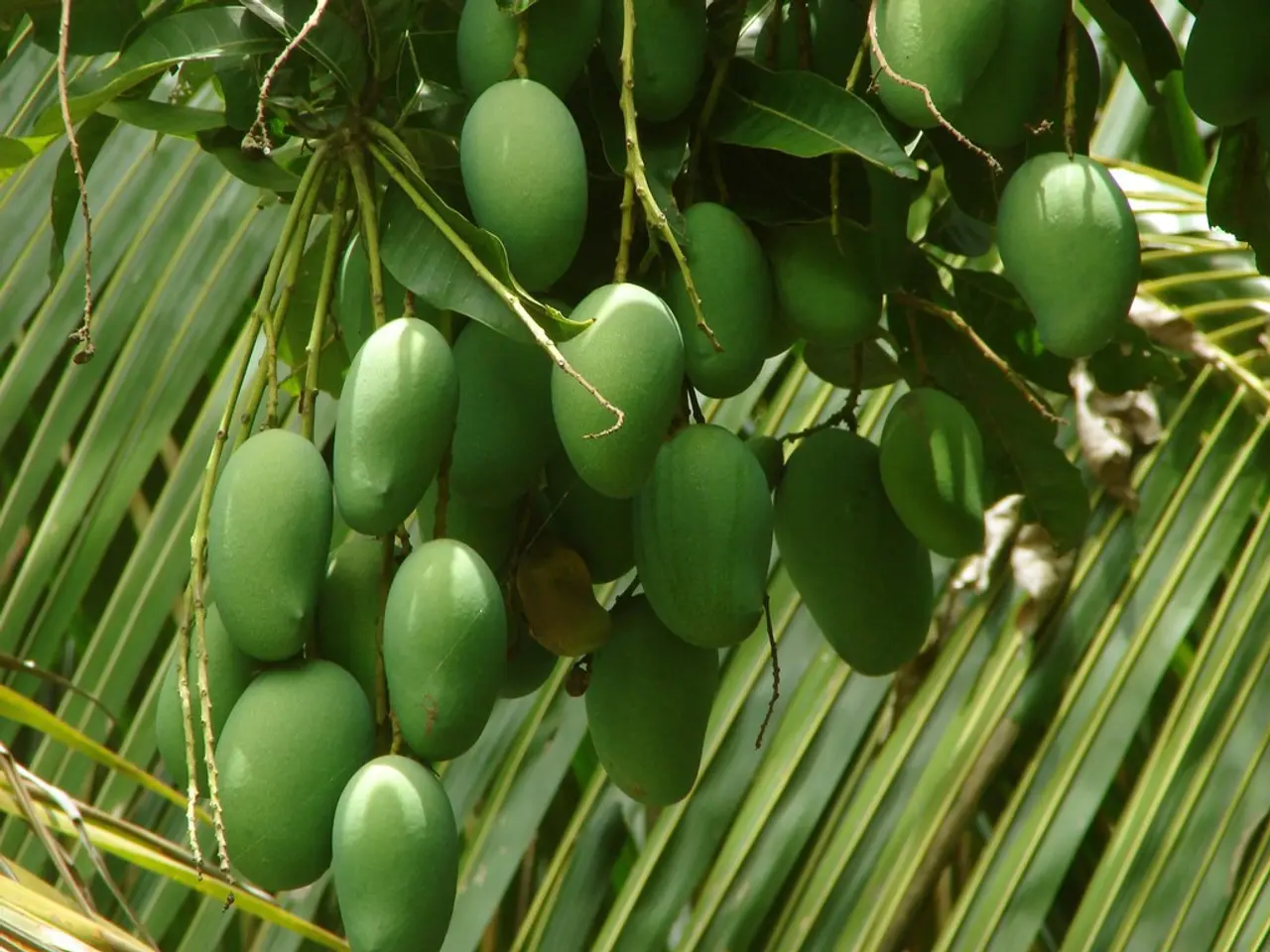Detailed Instructions for Mango Cultivation for Novice Farmers in India
Starting a mango farm in India can be a lucrative venture, given the high demand for high-quality mangoes. To ensure success, follow these best practices for site selection, variety selection, farm management, and marketing.
Site Selection
Choosing the right location is crucial for a profitable mango farm. Look for deep, sandy loam soil rich in organic matter, which promotes high yield and good tree health. The soil should be well-drained to prevent root rot and fungal diseases, avoiding heavy clay or waterlogged soils. Mango trees thrive best in aerated soils with minimal compaction.
Consider the climate as well. Mango trees need tropical to subtropical climates with warm temperatures and moderate rainfall, avoiding extreme frost or waterlogging conditions.
Variety Selection
Selecting the right mango variety is essential for a successful farm. Opt for high-yielding, disease-tolerant, and market-preferred varieties. A promising new hybrid is 'Awadh Abhaya,' developed by ICAR-CISH, combining traits of Neelum and Tommy Atkins varieties. It offers regular bearing, pest/disease tolerance, firm fruits with attractive skin, long shelf life, and late-season harvesting to capture better market prices.
Consider varieties suitable for your region and intended market (fresh, processing, export). Choosing varieties with uniform and regular bearing reduces income volatility.
Farm Management Practices
Optimize spacing, irrigation, and care for continuous and consistent yield. A mature Awadh Abhaya tree can produce 80-85 kg fruit per season. Use organic farming methods to reduce input costs and improve soil health. Organic inputs such as compost, vermicompost, biofertilizers, and neem-based pesticides enhance long-term fertility, reduce pest susceptibility, and fetch premium market prices.
Regularly monitor soil health, employing advances in soil science and technologies like moisture sensors to manage water and nutrients efficiently. Implement pest and disease management with minimal chemical use, relying on resistant varieties and natural remedies where possible to maintain sustainability and reduce production costs.
Marketing Strategies
To successfully market mangoes, it's essential to identify the target audience and tailor strategies accordingly. Target niche and late-season markets using varieties like Awadh Abhaya to avoid competition and get premium prices. Explore organic certification and value addition—organic mangoes often command higher prices and steady demand.
Use modern marketing tools such as blockchain traceability and digital platforms to assure quality and build consumer trust, expanding reach to export and domestic premium markets. Develop links with local farmer cooperatives, exporters, and retail chains to stabilize sales and optimize profits.
In summary, profitability hinges on selecting the right site and variety like Awadh Abhaya, adopting organic and climate-smart farm management, and leveraging strategic marketing to reach high-value markets. These practices together reduce risks, improve yields, and increase returns in India's diverse mango farming landscape.
Remember to maintain a distance of at least 10-12 meters between mango trees, plant appropriately spaced saplings, water newly planted trees regularly, and ensure access to safe water sources. Integrated pest management (IPM) techniques can help manage pests and diseases. Mango trees thrive in warm environments with temperatures between 24°C and 30°C and a clear dry season.
Common pests like aphids, fruit flies, and mealybugs can harm mangoes. Grafted mango saplings mature more quickly and are more resistant to disease than seed-grown trees. Micronutrients like magnesium, boron, and zinc are crucial for fruit development. Mango trees require well-drained soil, plenty of sunlight, and enough space to grow.
Diseases like anthracnose and powdery mildew can impair mango yield. Pruning mango trees maintains their shape, promotes healthy growth, and boosts fruit yield. Mangoes typically start bearing fruit 3-4 years after planting.
Mango farming is a profitable business in India, due to high demand for high-quality mangoes. The success of a mango farm depends on picking the right type of mango, considering factors such as climate, soil type, and market demand. The ideal soil for mango trees is slightly acidic to neutral (pH 6-7). Mango trees require a balanced supply of essential nutrients, including potassium, phosphorus, and nitrogen.
- Effective water management is crucial for the success of a mango farm; regular monitoring of moisture levels and efficient irrigation techniques can help ensure consistent yield and minimal water wastage.
- Optimal farm management involves not only site selection, variety selection, and marketing strategies but also proper business finance planning to cover initial investments in land, saplings, and farm infrastructure, as well as ongoing costs for labor, inputs, and marketing efforts.




